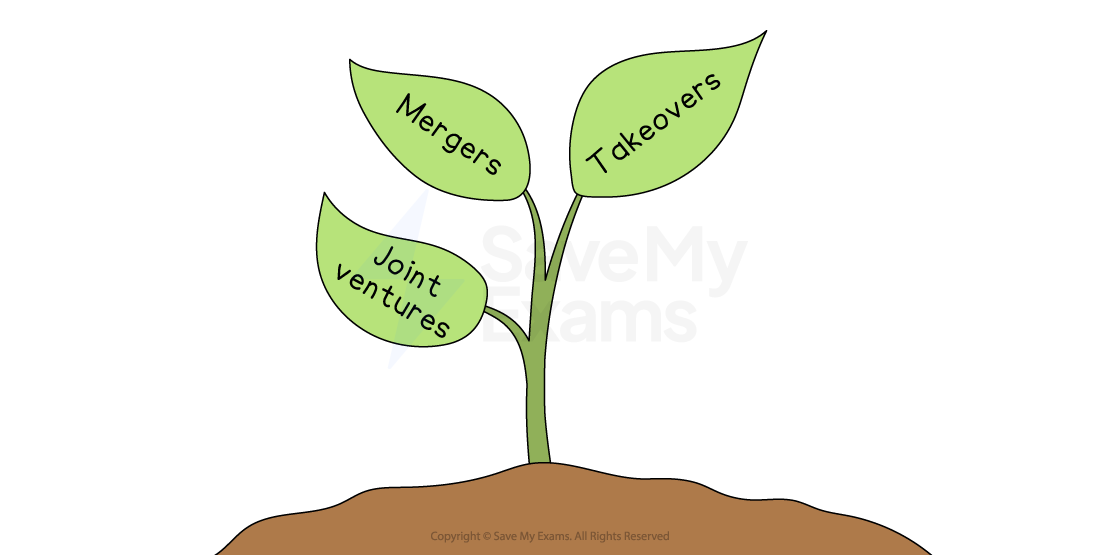Business Growth (Cambridge (CIE) A Level Business): Revision Note
Exam code: 9609
Why do businesses grow?
Business growth involves a business increasing its size, scope, or scale
Their leaders or owners may have ambitions for growth for a range of reasons
Reason | Explanation | Example |
|---|---|---|
Rising customer demand |
|
|
Economies of scale |
|
|
Entering new markets or products |
|
|
Internal (organic) growth
Organic growth (internal) is usually generated by
Gaining greater market share
Product diversification
Opening a new store
International expansion
Investing in new technology or production machinery
Firms will often grow organically to the point where they are in a financial position to integrate with others
Integration speeds up growth but also creates new challenges
Evaluating organic growth
Advantages | Disadvantages |
|---|---|
|
|
External growth
Integration in the form of mergers, takeovers, and joint ventures results in rapid business growth and is referred to as external (or inorganic) growth
Methods of external growth

A merger occurs when two or more companies combine to form a new company, usually on a friendly basis
The original companies cease to exist, and their assets and liabilities are transferred to the newly created entity
Firms merge to become stronger together than they would be apart
That strength comes from lower costs, more customers, new capabilities or less competition
A takeover occurs when one company purchases another company, often against its will (hostile takeover)
The acquiring company buys a controlling stake (more than 50% of shares) in the target company's shares and gains control of its operations
A joint venture occurs when two businesses join together to share their knowledge, resources, and skills to form a separate business entity, usually for a limited period of time
E.g., the mobile network EE is in a joint venture formed by the French mobile network, Orange, and the German mobile network, T-Mobile
There are several reasons why companies may choose to pursue external growth
Reasons for external growth
Reason | Explanation | Example |
|---|---|---|
Strategic fit |
|
|
Economies of scale |
|
|
Synergies |
|
|
Elimination of competition |
|
|
Shareholder value |
|
|
Types of integration
External growth usually takes place when firms join in one of three broad ways
1. Vertical integration
This is a merger or takeover of another firm in the supply chain or different stage of the production process
E.g. An ice cream manufacturer merges with a dairy farm or an ice cream cafe chain
Examples of vertical integration

Forward vertical integration involves a merger or takeover with a firm further forward in the supply chain
E.g. A dairy farmer merges with an ice cream manufacturer
Backward vertical integration involves a merger/takeover with a firm further backwards in the supply chain
E.g. An ice cream retailer takes over an ice cream manufacturer
Evaluating vertical integration
Advantages | Disadvantages |
|---|---|
|
|
2. Horizontal integration
This is a merger or takeover of a firm at the same stage of the production process
E.g. An ice cream manufacturer buys another ice cream manufacturer
Evaluating horizontal integration
Advantages | Disadvantages |
|---|---|
|
|
3. Conglomerate integration
This is a merger or takeover between firms in entirely different industries
E.g., An ice cream manufacturer buys a clothing company
Evaluating conglomerate integration
Advantages | Disadvantages |
|---|---|
|
|

Unlock more, it's free!
Did this page help you?